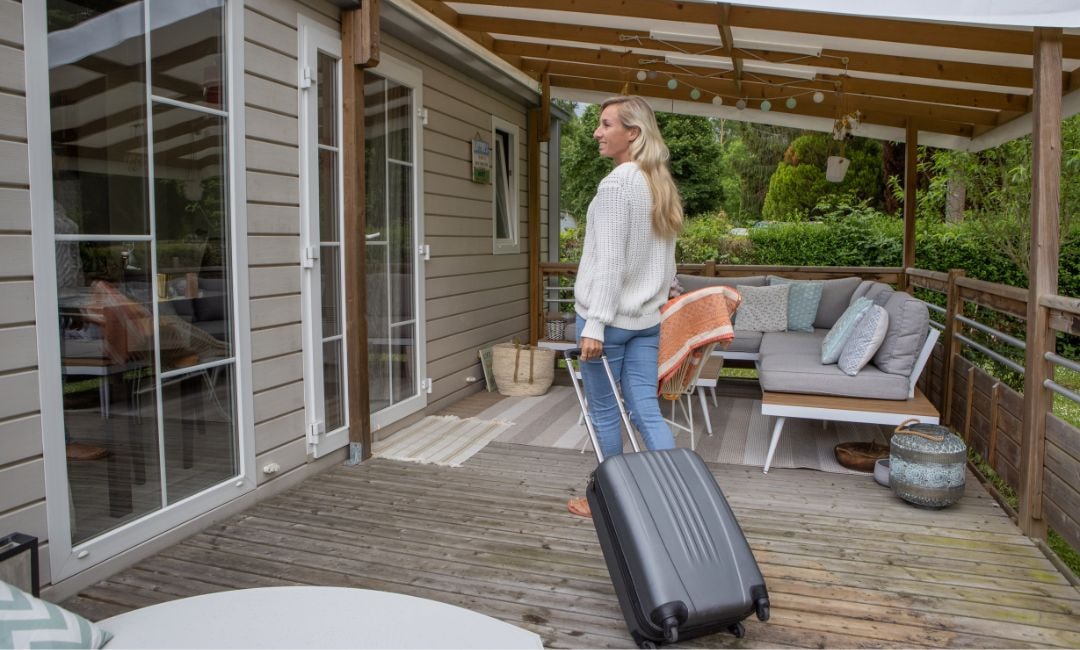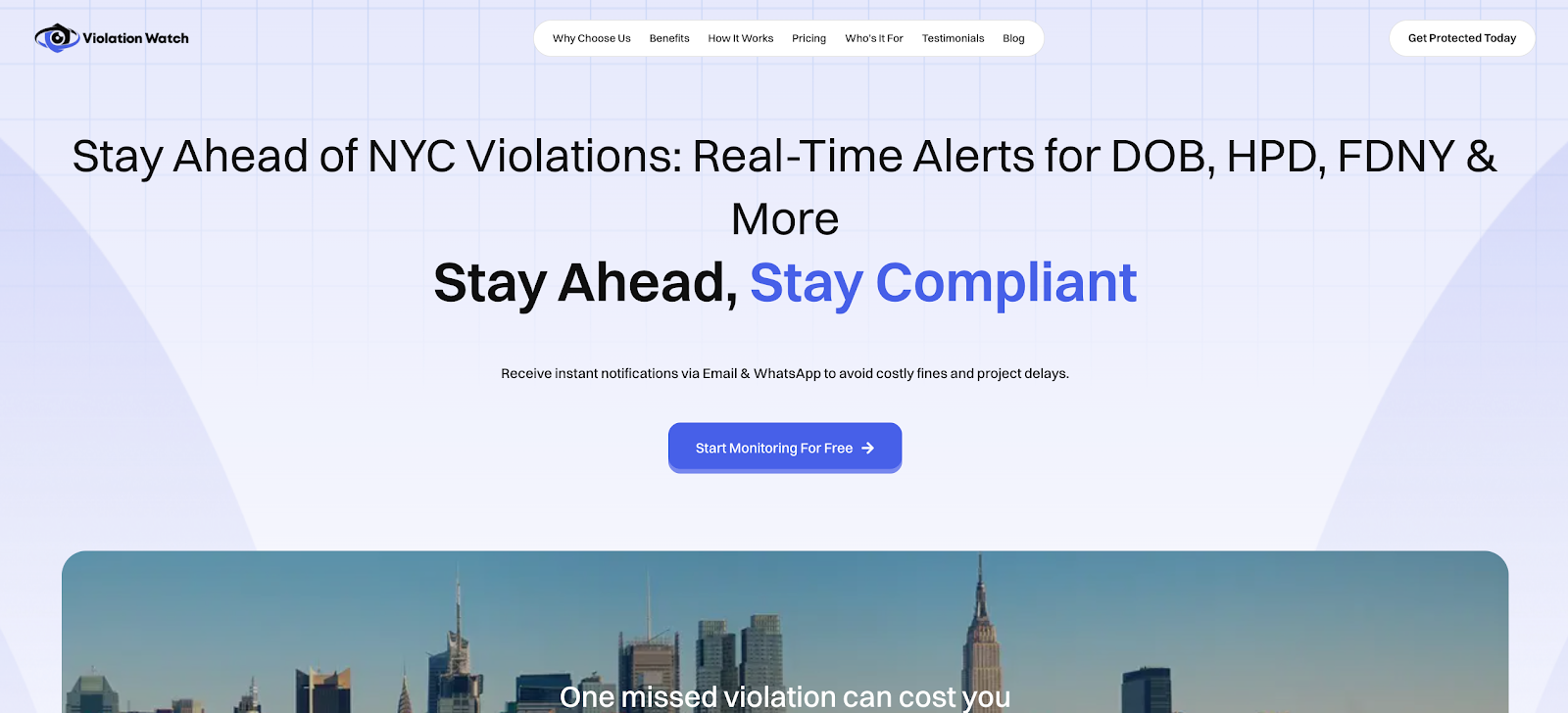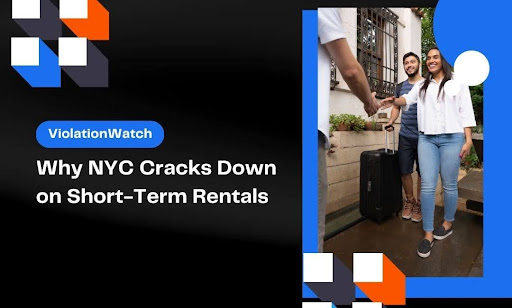NYC doesn’t hate Airbnb. It hates risk. And short-term rentals—when poorly managed—create a lot of it.
Illegal units, unsafe buildings, lost tax revenue, housing shortages, and buildings that feel more like hotels than homes. The city sees it all as a threat. And it’s cracking down harder than ever. Fines are steep. Inspections are sharp. And violations stack up fast if you’re not ready.
But here’s the truth no one talks about: most short-term rental fines in NYC aren’t about renting. They’re about what gets missed behind the scenes—unfiled permits, HPD issues, DOB compliance gaps, or FDNY safety lapses. That’s where it gets expensive. Fast.
You’re not here to guess your way through this. You’re here to figure out what’s actually happening—and how to stay one step ahead.
Here’s what you’ll get from this article:
- Why NYC is aggressively targeting short-term rentals (and what that actually means)
- The specific city agencies involved in enforcement, and how they operate
- The most common violations triggered by short-term listings (even if you’re well-meaning)
- How short-term rental activity impacts long-term building compliance
- Smart, low-effort steps you can take today to reduce your exposure
- How to use tools like ViolationWatch to catch violations early, track enforcement, and avoid preventable fines
If the city’s watching your building closer than ever, the least you can do is watch it better than they do. Let’s break it down.
Why NYC Keeps Cracking Down on Short-Term Rentals

New York City isn’t backing off short-term rentals. It’s tightening the grip. This isn’t about a few noisy guests or late-night parties. It’s about control over safety, housing, and how buildings function at their core. The city doesn’t care how well-rated your listing is or how polite your guests are. It cares whether your setup violates building codes, disrupts housing stability, or skirts registration rules.
Here’s the real issue: when residential units shift into hotel-style rentals, it disrupts everything.
Affordable housing stock drops. Rent pressure builds. Buildings designed for permanent residents are used in ways that push against fire codes, occupancy limits, and zoning rules. And that’s when the enforcement engines turn on.
Multiple city agencies start watching. The Department of Buildings (DOB), Fire Department (FDNY), and Housing Preservation and Development (HPD) each have their own reasons to take action. And they don’t operate in silos. A violation with one agency often pulls in others, fast.
Here’s what the city looks for:
- Units rented without proper registration or beyond legal limits
- Apartment conversions that violate occupancy or zoning rules
- Failure to meet safety standards like egress, sprinklers, or CO/smoke detectors
- Rent-stabilized or public housing units are being used as illegal hotels
- Repeat complaints or 311 reports tied to short-term stays
Even small operators get flagged when the building itself draws attention. One tenant listing their unit can lead to a full DOB inspection, and every issue gets noted. If your property has a known short-term rental issue, you’re already on a watchlist.
The crackdown isn’t slowing. If anything, it’s becoming more automated, more data-driven, and less forgiving. Now’s the time to learn how to spot the warning signs before the city does.
Who’s Cracking Down and How They Work
Short-term rental enforcement in NYC isn’t siloed. Multiple agencies work together, and once one steps in, the rest usually follow. If you’re not sure who’s watching, here’s a breakdown of the main players and how they operate.
Department of Buildings (DOB)
DOB focuses on building classification, structural safety, and legal use.
- Tracks illegal use of residential units for transient occupancy
- Flags unapproved construction (like partition walls or lofts)
- Inspects for blocked egress, overcrowding, and change of use
- Issues with ECB violations with serious financial penalties
- Launches full-building inspections once a flagged unit is found
One short-term listing can trigger a full DOB sweep.
Fire Department of New York (FDNY)
FDNY is all about fire code, and short-term rentals often violate it.
- Responds to complaints about fire safety or illegal conversions
- Inspects for missing smoke detectors or non-code exits
- Checks for obstructed hallways, unsafe layouts, or basement use
- Cites owners for inadequate fire suppression systems
- Can issue orders that require immediate correction or closure
FDNY inspections often uncover risks owners don’t even know exist.
Housing Preservation and Development (HPD)
HPD protects regulated housing and enforces the Multiple Dwelling Law.
- Targets illegal rentals in rent-stabilized or affordable units
- Tracks harassment claims linked to short-term leasing pressure
- Responds to 311 complaints about overcrowding or safety
- Partners with DOB when physical violations are found
- Issues with housing code violations that impact the certificate of occupancy
Using a rent-stabilized unit for short-term rental can trigger multiple fines.
Office of Special Enforcement (OSE)
OSE coordinates the city’s broader crackdown efforts.
- Investigate listings on platforms like Airbnb and VRBO
- Cross-references data across city agencies and complaint history
- Runs large-scale sweeps in buildings with repeat activity
- Issues violations across DOB, FDNY, and HPD channels simultaneously
- Works directly with legal and administrative enforcement teams
When OSE is involved, you’re dealing with coordinated enforcement, not guesswork.
NYC enforcement doesn’t come from one place. It comes from all directions. You need to track what these agencies look for—before they show up at your door.
Hidden Violations That Short-Term Listings Often Trigger

Plenty of short-term rental operators follow the rules—or try to. But NYC enforcement doesn’t just target bad actors. It targets patterns. And even well-meaning listings can trip over violations buried in building codes, fire safety rules, or housing laws.
Most of these aren’t obvious. They don’t show up in your Airbnb dashboard or get flagged by the booking platform. But they show up on a city inspector’s checklist.
Here’s what gets flagged most often:
Illegal Use or Occupancy
- Renting fewer than 30 days in buildings with three or more units (without the owner present)
- Using units not zoned for transient occupancy
- Renting in buildings not registered as Class B or for legal hotel use
This one’s a favorite for enforcement. It’s easy to prove and hard to defend.
DOB Violations for Layout or Use
- Installing partitions without permits
- Creating extra bedrooms or shared sleeping areas
- Blocking required egress or fire exits
- Using basements or cellars as sleeping quarters
Even minor changes—like adding a lock or separating rooms—can violate building code.
FDNY Fire Safety Violations
- Missing or non-functional smoke and CO detectors
- Inadequate sprinkler coverage
- Obstructed exits or locked interior doors
- Using extension cords or plug-in heaters against the fire code
FDNY doesn’t wait for a fire to enforce these. A single complaint can trigger a full inspection.
HPD Violations Tied to Housing Law
- Renting out rent-stabilized or subsidized units
- Ignoring complaints of harassment or unsafe conditions
- Overcrowding units beyond legal occupancy limits
HPD flags these violations even if the unit is clean, well-managed, and guest-approved.
Failure to Register or File Required Documents
- Skipping the city’s short-term rental registration
- Failing to display the registration number on listings
- Not updating the owner contact or emergency access info
This category grows every year. NYC keeps adding filing and disclosure requirements—miss one, and you’re in violation.
Even with good intentions, it’s easy to trigger multiple violations with a single listing. That’s what makes enforcement so aggressive. One visit leads to a chain reaction—and each violation adds time, cost, and legal exposure.
Quick Moves That Lower Your Short-Term Rental Risk
Running a short-term rental in NYC is less about loopholes and more about mitigating exposure. The city isn’t handing out warnings anymore. It’s handing out violations, often triggered by basic oversight.
Below are five actionable, compliance-focused steps every short-term operator or building owner should execute now. Each one directly targets what inspectors, enforcement units, and complaint-driven sweeps look for.
Audit Your Building’s Current Classification
Your first exposure check starts with the building’s Certificate of Occupancy (CO) and zoning designation.
Here’s what you need to pull:
- The CO on file with the NYC Department of Buildings (DOB)
- Zoning Resolution references (e.g., R6B, C1-9) to determine if transient use is allowed
- Any Use Group restrictions listed on DOB records (e.g., Use Group 2 = permanent residential)
Why it matters:
Short-term rentals are only legal in buildings properly zoned and classified for transient occupancy. Most residential buildings—especially Class A buildings—are not. Even if a unit is furnished and guest-ready, renting it out for fewer than 30 days violates MDL unless the host is physically present.
Also check for:
- Building status under the Multiple Dwelling Law (MDL)
- Whether it’s registered as a hotel (Class B or transient facility)
- Open or pending CO amendments
Pro tip: Use DOB’s BIS and DOB NOW portals to pull current and historical filings. Any change-of-use filings that aren’t approved can lead to a stop-work order and an enforcement action.
Fix Obvious Fire and Egress Issues
FDNY enforcement ramps up once DOB flags occupancy violations—and they’re not subtle about what gets cited.
Here’s what you need to verify, room by room:
- Smoke detectors: Installed in every sleeping area and outside of them; tested monthly
- Carbon monoxide detectors: Within 15 feet of every sleeping area, hardwired preferred
- Egress routes: No obstructions, locked interior doors, or converted rooms blocking exits
- Fire suppression systems: Sprinklers and alarms were required by code (check DOB records)
- Emergency signage: In multiple-dwelling units, posted egress maps may be required
Problem zones to double-check:
- Basement and cellar units (illegal for occupancy in most residential zones)
- Rooms with no windows or alternative egress
- Lofts and mezzanines were not properly filed with the DOB
Pro tip: If you’ve added walls or reconfigured a unit, FDNY will view that as a safety risk unless permits were filed and approved.
Keep Guest Limits and Duration Within Legal Boundaries
Even if your unit is safe and inspected, short-term rental rules limit how it can be used. NYC enforces both occupancy caps and duration rules, and failing either can void your whole setup.
Key limitations to follow:
- Stay length: Less than 30 days is only legal if a permanent resident is present during the guest’s stay
- Occupancy: No more than 2 guests per legal bedroom plus one additional occupant per the NYC Housing Maintenance Code
- Sleeping arrangements: Beds, futons, or cots in hallways, kitchens, closets, or windowless rooms are violations—even if temporary
- Multiple guests in shared spaces: Banned in units that don’t meet MDL standards for room size, ceiling height, and light/ventilation
Pro tip: Inspectors often photograph sleeping areas during visits. Even staged “guest-ready” setups in illegal spaces can be used to justify violations.
Register Where Required and Keep Your Docs Updated
The NYC Office of Special Enforcement (OSE) requires short-term rental registration for most legal operators. Skipping it doesn’t just limit your listing—it opens the door for automatic violations.
Here’s what to file:
- Short-Term Rental Registration with OSE (when applicable)
- Property ownership and contact details updated through ACRIS or HPD
- Fire Safety Notice for multiple dwellings posted visibly (Section 15-12 of NYC Fire Code)
- Host license or business certificate, if you’re operating more than one unit
OSE also checks:
- If your registration number is posted on your listing
- Whether emergency access instructions are clear and posted
- Whether lease agreements allow subleasing or guest stays
Pro tip: Keep a digital compliance folder with all these filings—OSE and DOB often require them during enforcement review or hearings.
Use Tech That Flags Violations Early and Tracks Enforcement
Most short-term rental violations aren’t triggered by your guests. They’re triggered by inspection sweeps, unresolved complaints, or missing documents. And once a city agency files a violation, the clock starts ticking on your defense timeline.
Instead of manually checking city portals or waiting on a legal notice, use compliance tech to:
- Monitor all open and new violations across DOB, HPD, FDNY, ECB, and other NYC agencies
- Get automatic alerts the moment a new violation is issued
- Organize inspection history, filing records, and resolution status in one place
- Pull compliance reports for court defense, partner reviews, or lease negotiations
Manual tracking leaves too much room for late responses and missed deadlines. With the right platform, you gain visibility across your entire building or portfolio—and avoid preventable fines.
How ViolationWatch Helps You Stay Ahead of NYC’s Short-Term Rental Crackdowns

When the city moves fast, you need to move faster. ViolationWatch was built to keep short-term rental hosts out of blind spots. While most tools stop at public data lookups or delayed alerts, this platform does the one thing others don’t: it keeps you updated before violations spiral into fines or shutdowns.
If your unit—or your entire building—is exposed to multi-agency enforcement, this tool gives you a fighting chance to act early and intelligently.
Here’s how it works, step by step:
Sign up and add your properties
- Input each NYC address you want to monitor
- Assign location labels to distinguish units or buildings
- No guesswork—the system auto-maps agency jurisdictions tied to that address
Whether you operate one or several short-term rental properties, setup takes minutes, and protection starts immediately.
Pick which violations to monitor
- Choose from DOB, FDNY, HPD, ECB, 311 complaints, and more
- Tailor alerts by property type, violation category, or status
- Great for short-term operators juggling multiple listings or buildings
This gives you coverage across every agency involved in New York City’s crackdown on illegal use and compliance gaps.
Receive instant alerts via WhatsApp and email
- You’ll know when new violations hit, not days later
- Alerts go to multiple team members, not just one inbox
- Built-in redundancy ensures nobody misses critical updates
This is key for short-term rental listings where a single missed alert can turn into a costly penalty.
Take action before fines escalate
- Click into full violation details directly from your dashboard
- View photos, full descriptions, nearby issues, and hearing dates
- Start resolution workflows before you’re dragged into hearings or forced shutdowns
Many owners don’t realize they’ve been flagged until the fine arrives. ViolationWatch cuts through that delay.
Why short-term rental owners choose ViolationWatch over other tools
Unlike basic lookup platforms, ViolationWatch is tailored to NYC’s multi-agency enforcement structure and illegal short-term rentals that trigger overlapping penalties from different departments.
- Tracks all violation types across DOB, HPD, FDNY, and 311
- AI-powered scanning for faster, more accurate alerts
- Multi-location and multi-contact support for full team visibility
- Secure dashboard access to original records and compliance history
- No credit card required to start—free trial available instantly
You’re not relying on spreadsheets, shared bookmarks, or disconnected email chains. You’re using a live system that monitors, alerts, and prevents the kinds of mistakes that get short-term rental hosts into legal trouble under local law.
Clear Pricing, No Surprises
| Plan | Price | What You Get |
| Free Trial | $0/month | 1 location, limited to 311 complaints, delayed alerts |
| Per Address Plan | $9.99/month | Full violation tracking, instant alerts, AI-powered monitoring, document access, team notifications |
Short-term rental enforcement in NYC moves fast. Now, you can move faster. ViolationWatch gives you the visibility, alerts, and control to run smarter and stay compliant.
Managing Short-Term Rental Risk in NYC Doesn’t Have to Be Guesswork
Short-term rentals in New York can work—if you know what the city’s really looking for. You’ve now seen how enforcement unfolds, who gets involved, and what triggers violations, even when you play it straight. That knowledge alone puts you ahead of the curve.
But knowing isn’t enough. Acting on it—consistently—is what protects your operation and your bottom line. And that’s where smarter systems like ViolationWatch step in. They don’t replace responsibility. They support it by giving you the visibility and speed to take control before things go sideways.
Let’s run through what you’ve covered—and what it gets you:
- Why NYC keeps cracking down→ You now understand it’s about zoning, housing protection, and safety, not platform politics.
- Which agencies enforce it→ You can identify which agency is likely to get involved based on the issue, and prepare accordingly.
- What violations get triggered→ You’ve seen the most common fines, many of which come from layout changes, safety lapses, or guest overuse.
- What proactive steps you can take→ You’ve walked through high-impact actions like reviewing the Certificate of Occupancy, staying within occupancy rules, and maintaining clear egress.
- Why smart tech matters→ You now know how ViolationWatch simplifies multi-agency monitoring, improves response time, and helps you avoid preventable penalties.
The result? You’re no longer flying blind in one of the most aggressively enforced short-term rental markets in the country. Whether you manage a single unit or multiple buildings, compliance isn’t something you check once. It’s something you manage daily, and now you’ve got the tools to do it right.

